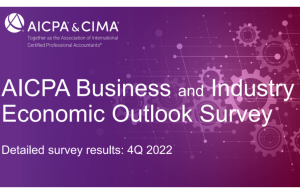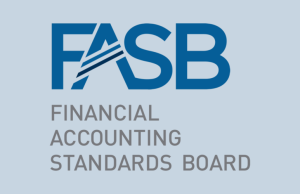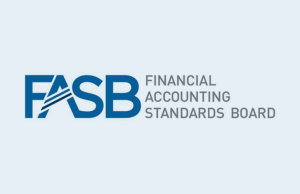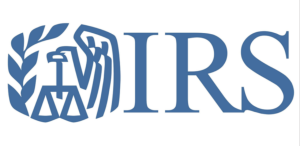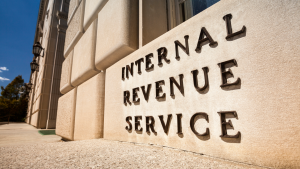By Christine Hall, CPA
The year-end financial close process and preparation for the annual audit can be a stressful time. It’s never dull and there are always new wrinkles added by various regulatory agencies. Here are five tips that you can use to stay ahead of the game and prepare for your nonprofit’s upcoming June 30 year-end.
Document Changes to the Internal/Financial Controls and Assess Risks Related to Information Technology
Internal control procedures have been evolving due to the switch to hybrid and remote working environments. While such changes have been implemented, they might not have been memorialized within an accounting manual or handbook. It is important to formally document any internal control changes in anticipation of the annual audit.
While evaluating the changes to internal controls, you should ensure that you can still demonstrate adequate segregation of duties. For example, while many organizations have experienced a workforce shrinkage, the person opening the mail should not be the same person who deposits the checks and reconciles the bank accounts. Therefore, you should review your processes and identify what key controls you have put in place to mitigate any control deficiencies.
Annual audits will also have increased focus on information technology (IT) and for good reason, as we all continue to work more frequently in cloud-based and remote environments. A few of the new IT-related risks include cybersecurity risks such as (i) phishing and unencrypted file sharing; (ii) vulnerability and penetration issues; (iii) bad habits such as working outside of the Virtual Private Network; (iv) password management; and, (v) insufficient insurance coverage.
It is imperative to assess these risks on an ongoing basis and review your IT controls and document any changes accordingly. Keep your employees informed of IT risks and provide detailed instructions on how to respond to various IT-related scenarios. Consider engaging outside consultants for dark web scans, vulnerability scans, penetration tests and/or database protocol.
As part of the audit, auditors will inquire whether you have reviewed the System and Organization Controls (SOC) reports of third-party vendors who serve as part of the internal control landscape. These reports disclose the effectiveness of the service organization’s internal controls and safeguards while providing independent and actionable feedback. You will want to make sure you have such reports readily available and that there is nothing disclosed in those reports that would cause a red flag for you as the party relying on the vendor’s controls.
Assess Collectability and Sustainability
As part of the closing of the books, the assessment of an allowance for doubtful collections is an important management estimate that the auditors will want to test. For outstanding receivable balances, you should look at collection history and subsequent collections to assist you in making assessments regarding your allowance for uncollectible accounts.
Once that task is complete, you should perform a liquidity analysis, making note of whether you have enough financial assets to fund adequate reserves. You should be asking yourself if the asset mix is the right balance to create a predictable return while still enabling your not-for-profit to convert to cash in times of need.
These exercises are also useful when preparing the required quantitative and qualitative liquidity disclosure within the financial statements. This analysis can be prepared once the organization’s books are closed. Look at the result, and if the numbers seem small or even negative in certain cases, start preparing the disclosure as to your plan to manage liquidity going forward.
Also, engage in conversation with the organization’s board member to avoid any surprises during the audit presentation. It might also be helpful to prepare responses to questions that you may receive from potential donors or grantors.
Functional Expense Allocation
Nonprofit entities are required to analyze and report expenses by nature and function either in the statement of activities, statement of functional expenses or within the notes to the financial statements. Financial statement disclosures should also include a description of the methods used to allocate costs among program and support functions.
You should review your allocation methodologies on a frequent basis and ensure they are reasonable and consistently applied. For example, when allocating salaries and related benefits, employee timesheets may be a useful tool. In addition, when allocating occupancy expenses, you might utilize square footage by department or program.
The allocation of expenses tells the story of how the organization spent its funding and what expenses went toward mission fulfillment. Given the importance of this information and the amount of time involved in preparing the analysis, this will be an area you will wish to focus on earlier rather than later.
Be Aware of New and Upcoming Accounting Pronouncements
In recent years, the Financial Accounting Standards Board has been issuing a steady stream of new accounting pronouncements applicable to nonprofit entities. It is essential to make sure that you understand how and when these accounting pronouncements will impact your not-for-profit. Once you have established a good understanding of the guidance, you should consider setting up an implementation timeline and process. This way you can ensure a smooth adoption of the necessary pronouncements.
Two important upcoming accounting pronouncements affecting nonprofits that you should be aware of are Accounting Standards Update (ASU) 2020-07, Presentation and Disclosures by Not-for-Profit Entities for Contributed Nonfinancial Assets (Topic 958), and ASU 2016-02 Leases (Topic 842). ASU 2020-07 will require a nonprofit organization to present contributed nonfinancial assets as a separate line item in the statements of activities, apart from contributions of cash or other financial assets, as well as enhanced disclosures regarding such contributions. This ASU is effective for annual reporting periods beginning after June 15, 2021.
ASU 2016-02 will require lessees to recognize right-of-use assets and lease liabilities on the statements of financial position for all leases with terms longer than 12 months. This ASU is effective for annual reporting periods beginning after December 15, 2021.
Be Informed of Statement on Auditing Standards No. 134
In May 2019, the AICPA Auditing Standards Board issued Statement on Auditing Standards (SAS) No. 134, Auditor Reporting and Amendments, Including Amendments Addressing Disclosures in the Audit of Financial Statements, which will significantly change the auditor’s report in the financial statements for nonprofit entities. The revised reporting model is intended to enhance the communicative value and relevance of the auditor’s report to the users of the audited financial statements.
It does this by (i) providing more transparency into the audit and the related auditor’s report; (ii) satisfying the user’s need for more information by addressing the auditor’s responsibility; and (iii) providing new guidance for the form and content of the auditor’s report. The effective date of this SAS was originally for audits issued for periods ending on or after Dec. 15, 2020; however, due to COVID, the Auditing Standards Board delayed the effective date to periods ending on or after December 15, 2021. The primary changes caused by the adoption of this SAS include a reorganization of the Independent Auditors’ Report so that the audit opinion will now appear as the first paragraph, followed by the basis for opinion.
There is an optional disclosure of Key Audit Matters, which will only be completed if the auditor is engaged to do so. There will also be expanded required statements regarding the responsibilities of management, as well as the auditors, professional judgement, professional skepticism, and communications with those charged with governance. Additionally, a reference to entity’s ability to continue as a going concern is now required to be made. You should understand how this new SAS will impact your financial statements and inquire with your auditors if you have any questions or concerns.
With the help of these useful tips, timely communication and early planning, you can achieve a smoother year-end financial close and annual audit process. Remember, your auditors are there to assist you. So keep the lines of communication open, and reach out to them as any questions or concerns arise.
*****
Christine Hall, CPA, is senior manager at the Eisner Advisory Group LLC. Her email is [email protected]




